Jazz is more than just a genre of music; it’s a rich tapestry of unique sounds, emotions, and history.
It can transport listeners to different eras, evoke deep feelings, and spark creative inspiration like never before.
As well as reflecting cultural and artistic expression, jazz showcases intricate musical craftsmanship.
Knowing the most common jazz chord progressions as a music producer can help you infuse your tracks with soulful grooves and add layers of musical complexity.
That’s why we’re breaking down everything you’ll need to know to create jazz chord progressions with ease and style like.
In this article, we will cover:
- Understanding jazz chord progressions ✓
- The essentials of jazz chords for groovy tracks ✓
- The role of chord progressions in jazz music ✓
- The basics of jazz chords: i chord, minor/major sevenths ✓
- Popular jazz chord progressions: ii V I, minor ii V ✓
- Chromatic bass lines & rhythm changes ✓
- 11 common jazz chord progressions ✓
- Jazz chords in digital music production ✓
- Advanced techniques with diminished & dominant chords ✓
- Practical tips for jazz chord progression mastery ✓
- Much more ✓
You’ll know everything about jazz chords and jazz chord progressions to infuse your music with the soulful, intricate qualities of jazz.
Also, you’ll be equipped to navigate the complexities of these progressions and employ them like a true professional.
Whether you’re creating traditional jazz compositions or blending these elements into modern digital productions, this article is invaluable.
So, let’s dive in…
Table of Contents
- What are Jazz Chord Progressions
- Why Jazz Chords are Essential for Groovy Tracks
- The Role of Chord Progressions in Jazz Music
- The Basics of Jazz Chords
- Navigating Diminished and Dominant Chords in Jazz
- Diving into Popular Jazz Chord Progressions
- 11 Important Jazz Chord Progressions
- #1. The Classic ii V I Progression in Major Key
- #2. The Minor Key Variation: vi ii V
- #3. The Rhythmic I VI II V Progression
- #4. The Reflective Minor ii V i
- #5. The Bluesy Jazz Blues Progression
- #6. The Energetic Rhythm Changes
- #7. The Subtle Diminished Passing Chords
- #8. The Chromatic Approach to ii V
- #9. Major ii V I with Altered Chords
- #10. The Layered iii vi ii V Progression
- #11. The Latin-Infused Blues Bossa Progression
- Jazz Chords in Digital Music Production
- Advanced Techniques in Jazz Chord Progressions
- Tips and Tricks for Jazz Chord Progression Mastery
- Jazz Chord Progressions: Final Thoughts
What are Jazz Chord Progressions

Jazz chord progressions form the backbone of jazz music, a genre known for its expressive and complex harmony.
These progressions are sequences of chords that create an enticing landscape for classic jazz tunes, offering a foundation upon which melodies and harmonies are built.
Understanding jazz chord progressions is crucial for jazz musicians and music producers who want to master the genre and convey it like a pro.
These progressions not only dictate the structure of a piece but also provide immense emotional context and depth.
They range from simple two-chord vamps to elaborate, multi-chord sequences 一 each with unique characters.
One of the most distinctive features of jazz chord progressions is their use of extended and altered chords, which add color and tension.
This use of complex harmonies differentiates jazz from other music genres and requires a deep understanding of music theory and chordal relationships.
Why Jazz Chords are Essential for Groovy Tracks

Jazz chords are essential in creating the groovy, soulful, and often complex soundscapes that define jazz music.
Their richness and versatility allow for endless creative possibilities.
This makes jazz chords a favorite among musicians looking to add depth and sophistication to their beats.
The use of jazz chords in a track can instantly elevate its musicality.
Jazz chords innate elements add a layer of complexity that can captivate, like:
- A smooth transition between chords in a progression
- The unexpected twist of a diminished chord or altered chord
Plus, jazz chords provide a vast palette for improvisation, leading to added allure.
Jazz musicians often use these chords as a springboard for solos 一 exploring the harmonic boundaries and creating spontaneous yet cohesive musical narratives.
The Role of Chord Progressions in Jazz Music

In jazz music, chord progressions are not just a series of chords; they are a narrative tool.
Jazz chord progressions:
- Guide the emotional journey of a jazz song
- Create tension and release
- Set the mood for improvisation and interaction
Jazz chord progressions also serve as a common language among jazz musicians.
They form the basis of many jazz standards and compositions 一 allowing musicians to communicate ideas and play together cohesively.
The role of chord progressions in jazz also extends to education and tradition.
Learning these progressions is a rite of passage for aspiring jazz musicians, connecting them to the rich history of the genre.
The Basics of Jazz Chords
In this next section, let’s break down the basics of jazz chords so you can integrate jazz progressions in your tracks like a professional.
-
Decoding the i Chord in Jazz Harmony
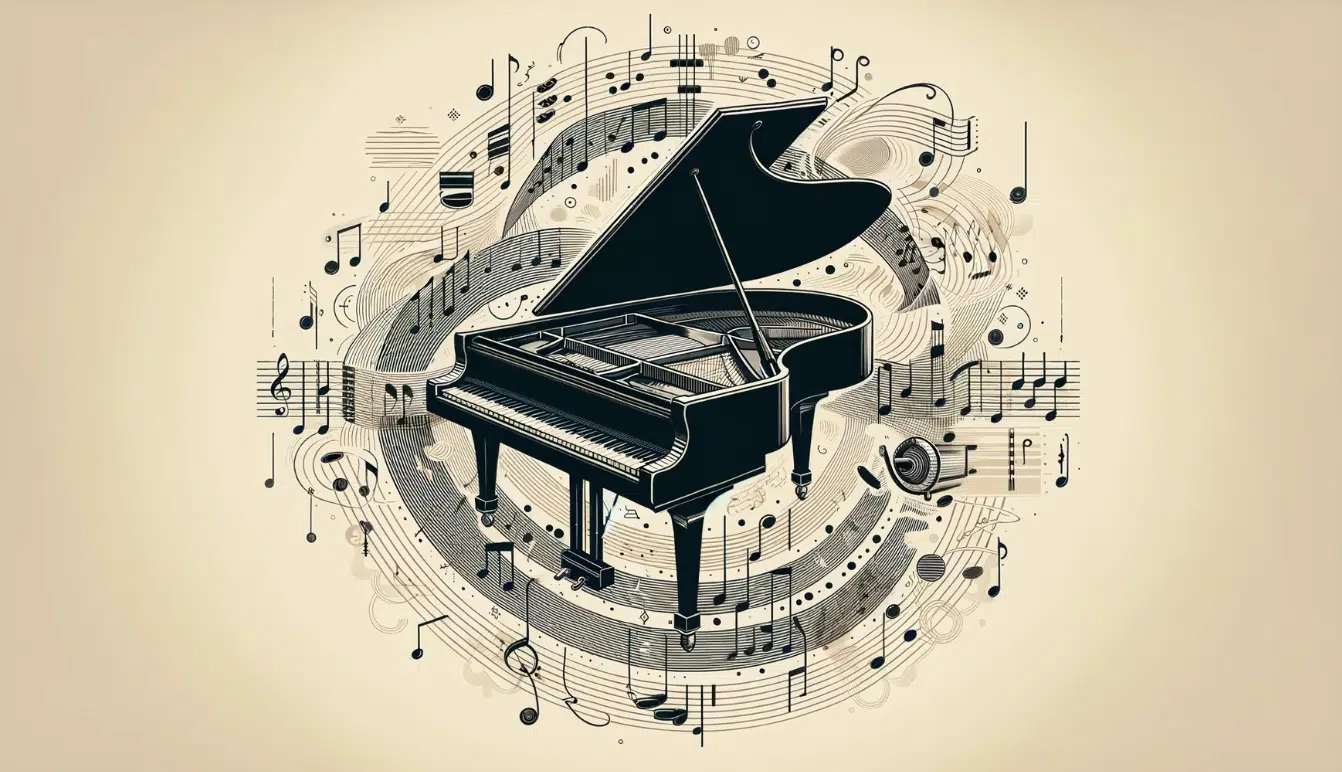
The ‘i’ chord, often a minor seventh chord in jazz, is fundamental in setting the tonal foundation of a piece.
This chord, central in minor key progressions, exudes a mellow and introspective quality vital in jazz music.
In jazz chord progressions, the ‘i’ chord often serves as a launching pad for complex harmonic journeys.
Its structure (a minor triad with an added minor seventh) lays the groundwork for intricate chord alterations and extensions 一 a staple in jazz harmony.
The versatility of the ‘i’ chord in jazz allows it to adapt seamlessly into various chord progressions.
Whether it’s leading into an iv chord in a minor key or transitioning to a VI in a major key, the ‘i’ chord is pivotal in shaping the harmonic narrative of jazz tunes.
-
The Allure of Minor and Major Seventh Chords
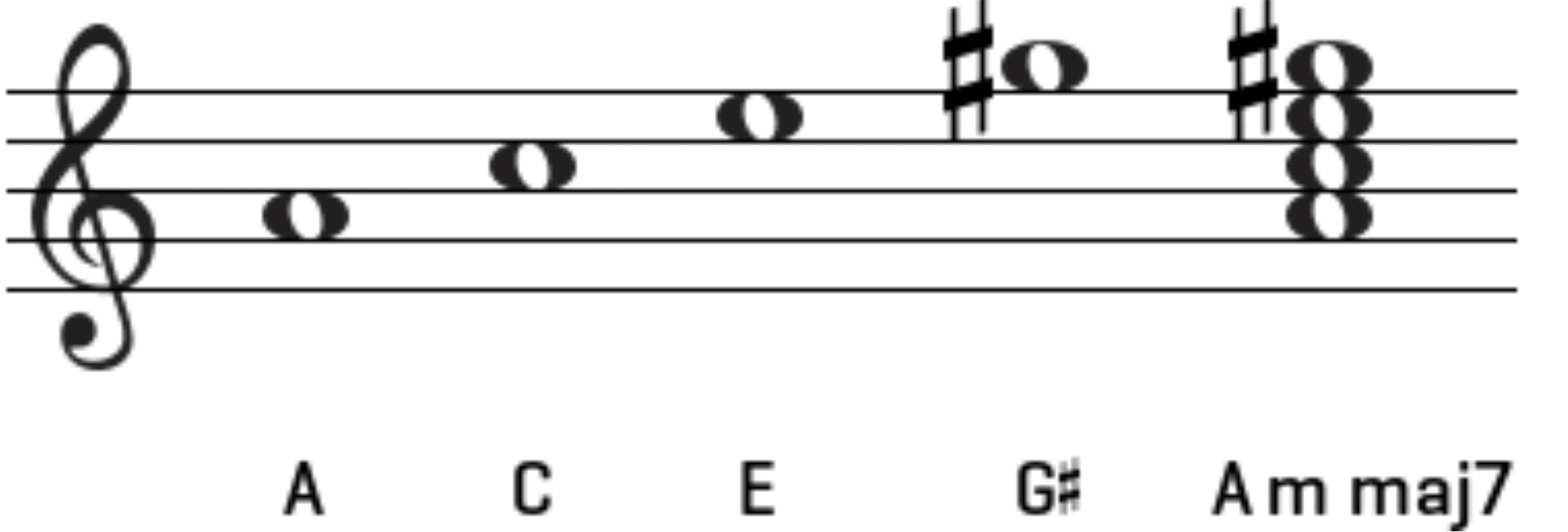
Minor and major seventh chords are cornerstones in jazz chords, each offering a distinct emotional color.
- The minor seventh chord 一 Has a somber and reflective sound
- The major seventh chord 一 Has a bright and resolved tone
These provide contrasting moods that are essential in jazz progressions.
By adding a seventh note to the basic triad, these chords introduce a level of sophistication and depth.
In jazz tunes, they often form the backbone of chord progressions, setting the overall tone and mood of the piece.
The beauty of these seventh chords lies in their expressive quality.
In jazz comping and improvisation, these chords are manipulated with various chord voicings and alterations, showcasing the dynamic and vibrant range of jazz music.
NOTE: In many jazz compositions, a minor chord played in minor keys often starkly contrasts the brighter tones of a major scale.
It creates a rich tapestry of sound that defines the genre’s expressive depth.
Diminished and dominant chords are key elements in creating tension and momentum within jazz chord progressions.
-
Diminished Chords
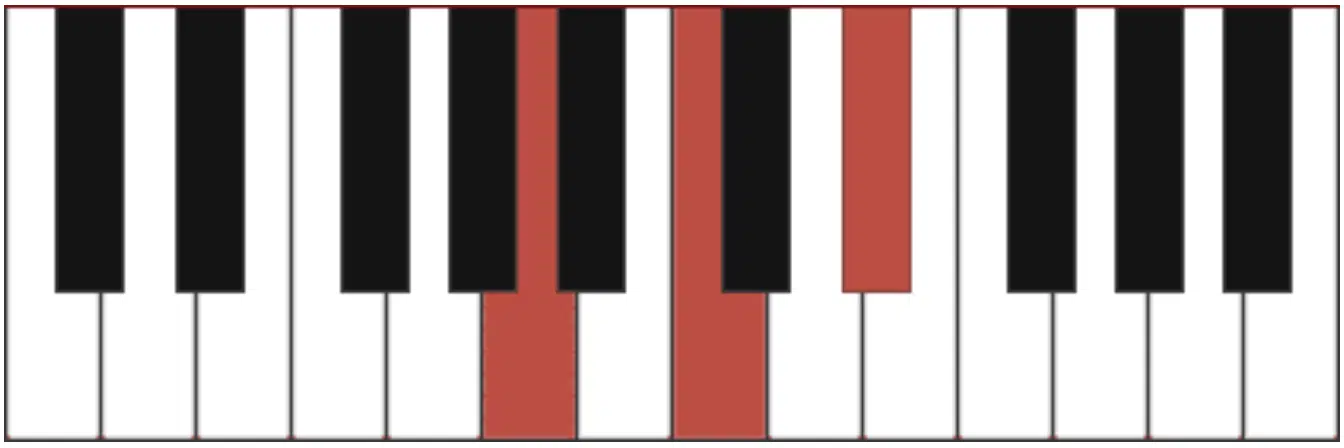
Diminished chords, with their unstable and dissonant sound, are often used as passing chords, leading into more stable harmonies and creating a sense of anticipation.
So, when you want to add some tension, a diminished chord is the way to go.
-
Dominant Chords

Dominant chords, specially the dominant seventh, play a crucial role in jazz.
Typically serving as the V chord in a progression, they have a strong resolve towards the tonic 一 driving the harmonic direction forward and providing a sense of closure.
With their unique qualities, these chords add a layer of drama and sophistication to jazz music.
They are essential in crafting the push-and-pull dynamic typical of jazz progressions, maintaining listener engagement through harmonic tension and release.
Whether you love jazz music or not, the interplay between diatonic chords and the pivotal dominant chord is enchanting.
It creates a harmonic balance, weaving a tapestry of melodically pleasing and rhythmically complex sound.
Diving into Popular Jazz Chord Progressions
Before we explore specific jazz chord progressions, it’s important to recognize their role as the building blocks of jazz’s unique sound, setting the stage for musical innovation and expression. Remember, uppercase Roman numerals represent major chords, and lowercase Roman numerals represent minor chords.
-
The Classic ii V I Progression

The ii V I chord progression is perhaps the most iconic in jazz.
It’s the backbone of countless jazz standards and is fundamental in understanding jazz harmony.
This jazz chord progression:
- Moves from a minor ii chord
- Then, to a dominant V chord
- Resolves to a major I chord
It encapsulates the essence of jazz’s harmonic movement: tension and release.
The smooth, almost inevitable transition from the ii chord to the V chord, and finally to the I chord, creates a satisfying sense of resolution that is comforting and familiar.
In practice, the ii V I chord progression serves as a versatile template for improvisation and variation.
Jazz musicians often embellish these chords with extensions and alterations 一 making each rendition of these similar chord progressions unique and expressive.
-
Minor ii V and Major ii V Variations

The minor ii V and major ii V variations add diversity to the standard ii V I progression.
In the minor version, the ii chord is a minor ii, leading to a minor V, and resolving to a minor i, creating a moodier, more introspective feel.
The major ii V, on the other hand, maintains the major quality of the V and I chords, offering a brighter resolution.
This variation is often used in more upbeat and lively jazz pieces.
These variations showcase the adaptability and flexibility of jazz chord progressions.
This allows musicians to alter the emotional tone of a piece while maintaining a familiar harmonic structure.
-
Chromatic Bass Lines and Rhythm Changes
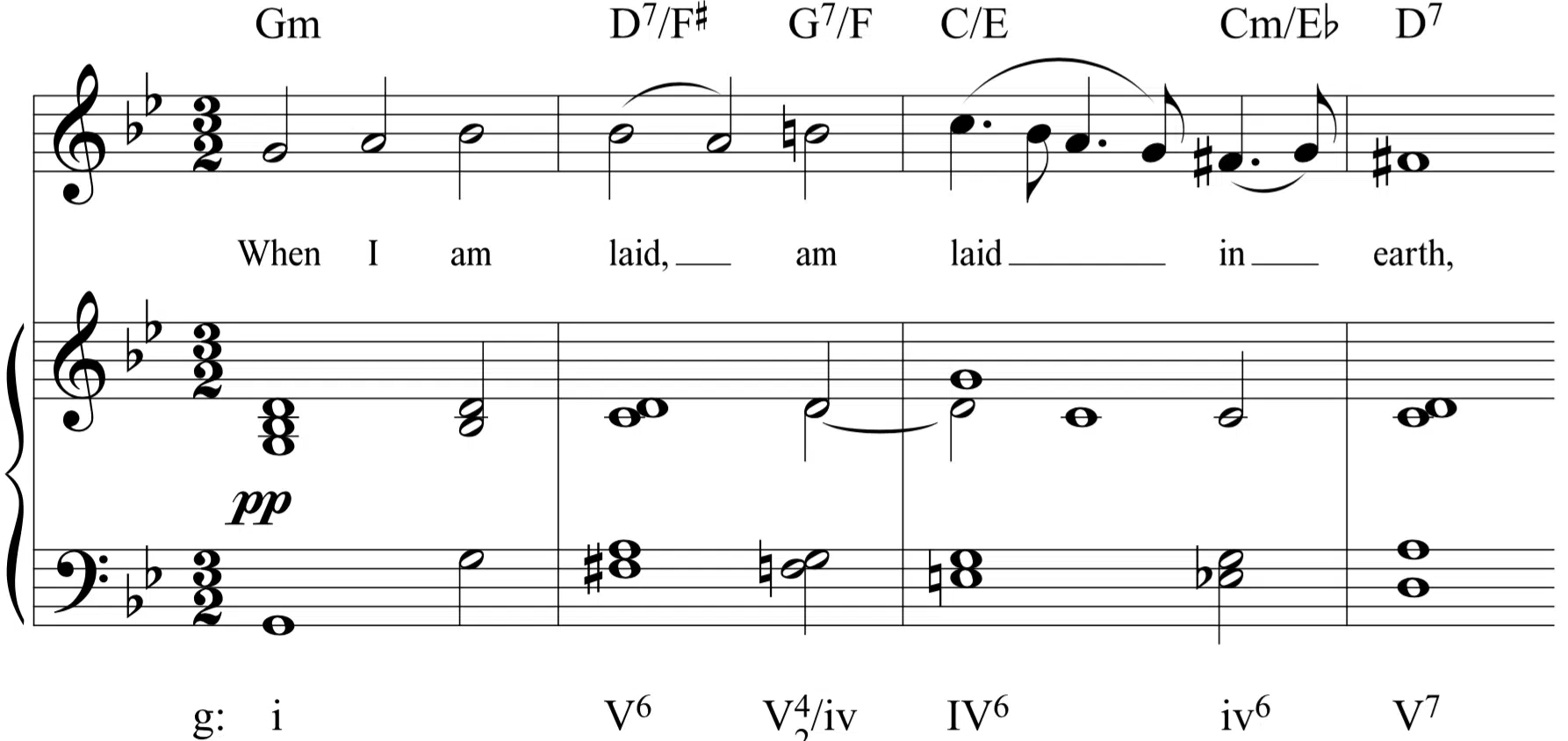
Chromatic bass lines and rhythm changes are staples in jazz that add complexity and interest to chord progressions.
Chromatic movements in the bass (a chromatic bass line) create a sense of motion and can lead to unexpected harmonic destinations.
Rhythm changes, based on the jazz chord progression of George Gershwin’s “I Got Rhythm,” are another fundamental jazz progression.
These changes are known for their brisk pace and harmonic variety 一 providing a lively framework for improvisation.
These elements exemplify the dynamic and evolving nature of jazz music.
They challenge musicians to think creatively and adaptively, pushing the boundaries of traditional harmony.
Understanding the use of a chromatic bass line in jazz can significantly enhance the flavor of a chord progression, adding a sense of movement and sophistication.
11 Important Jazz Chord Progressions
In this section, we delve into 11 important jazz chord progressions that have shaped the landscape of jazz music. Each important jazz chord progression offers a blend of traditional harmony and creative exploration. Let’s dive in to these common progressions.
#1. The Classic ii V I Progression in Major Key
The ii V I progression is the most quintessential jazz chord progression, forming the foundation of countless jazz standards.
It’s a seamless flow:
- From a minor ii chord
- To a dominant V
- Resolving to a major I
This perfectly emulates the true essence of jazz harmony.
Miles Davis’ classic “Tune Up” exemplifies this chord progression beautifully.
It uses the ii V I sequence to create a fluid and dynamic harmonic structure that’s engaging and melodically rich.
Learning this common chord progression is a great place to start if you want to create jazz songs with style.
#2. The Minor Key Variation: vi ii V
In contrast to the major key, the vi ii V chord progression in a minor key introduces a more somber and contemplative mood.
Starting with a minor vi chord, it transitions to the ii and then to the V chord, all within a minor key context.
“Blue in Green” by Bill Evans and Miles Davis is a classic example of this jazz chord progression.
This jazz songs haunting and reflective mood is a direct result of the melancholic tone set by the vi ii V progression.
#3. The Rhythmic I VI II V Progression
The I VI II V chord progression is another jazz cornerstone, known for its rhythmic and cyclical nature, which reels people in.
It’s a journey through different chordal emotions, starting with:
- The stable I
- Then, moves to the more dynamic VI and II
- Finally, resolving on the V
Duke Ellington’s “Take the ‘A’ Train” perfectly showcases the I VI II V progression.
The song’s lively and engaging rhythm is driven by this chordal sequence 一 making it a timeless jazz piece.
#4. The Reflective Minor ii V i
The minor ii V i is a staple in jazz, particularly in ballads and slower compositions.
This chord progression adds a depth of emotion and complexity 一 beginning with a somber minor ii, moving to a tense V, and resolving in a minor i chord.
“My Funny Valentine,” performed by Chet Baker, utilizes the minor ii V i to great effect.
This jazz songs emotional depth and introspection are heightened by this progression, creating an enchanting musical experience.
#5. The Bluesy Jazz Blues Progression
The Jazz Blues progression is a fusion of traditional blues and jazz harmony.
This common chord progression is characterized by a more complex sequence of chords that adds a jazzy twist to the classic 12-bar blues structure.
“Tenor Madness” by Sonny Rollins is an exemplary use of the Jazz Blues progression.
The track combines the soulful feel of the blues with the sophisticated harmony of jazz, resulting in a uniquely groovy sound.
#6. The Energetic Rhythm Changes
Rhythm Changes are based on the jazz chord progression of George Gershwin’s “I Got Rhythm.”
These rhythmic changes are known for their fast tempo and harmonic diversity 一 offering a lively and challenging framework for jazz musicians.
Charlie Parker’s “Anthropology” brilliantly utilizes Rhythm Changes.
This jazz song has a rapid pace and complex harmonic structure, showcasing the excitement and technical prowess inherent in this chord progression.
#7. The Subtle Diminished Passing Chords
Diminished passing chords are a unique element in jazz chord progressions, characterized by their tense and unresolved sound.
A diminished passing chord is typically formed by a diminished triad or a diminished seventh chord, placed between two more stable chords.
This creates a smooth, yet tension-filled transition.
These chords are often used to connect diatonic chords in a chord progression 一 adding a chromatic element that enhances the harmonic movement.
The use of diminished passing chords is a hallmark of sophisticated jazz harmony, introducing a layer of complexity and surprise in the music.
Thelonious Monk’s “Round Midnight” is a common jazz chord progression that incorporates diminished passing chords effectively.
They add complexity and intrigue to the song’s harmonic structure.
#8. The Chromatic Approach to ii V
The Chromatic Approach to ii V involves incorporating chromatic movement leading into the ii V progression.
This technique adds a layer of sophistication and surprise, often catching the listener’s ear with its unexpected turns.
The classic tune “Stella by Starlight” is a great example of where the Chromatic Approach to ii V is used.
These chromatic movements enrich the song’s harmonic progression 一 making it a favorite among jazz enthusiasts.
#9. Major ii V I with Altered Chords
The Major ii V I chord progression with altered chords is a variation that introduces altered tones to the dominant V chord.
This adds dissonance and tension before resolving to the I chord.
John Coltrane’s “Giant Steps” utilizes this progression, showcasing the dramatic effect of altered chords in a major ii V I context.
The song’s harmonic complexity is a testament to the creativity and innovation in jazz.
#10. The Layered iii vi ii V Progression
The iii vi ii V chord progression is a layered sequence that extends the traditional ii V I by adding two additional chords at the beginning.
This creates a longer, more complex harmonic journey.
“Autumn Leaves,” as performed by Cannonball Adderley, is a splendid example of the iii vi ii V progression.
This jazz song beautifully navigates through these chords 一 providing a rich tapestry of harmonic movement that is intricate and melodic.
#11. The Latin-Infused Blues Bossa Progression
The Blues Bossa progression combines the rhythm and feel of Bossa Nova with the structure of blues, both familiar and refreshingly new.
The style of this jazz chord progression often features a syncopated rhythm with a smooth flow of chords.
“Blue Bossa” by Kenny Dorham is the quintessential representation of this progression.
The track merges the laid-back groove of Bossa Nova with the harmonic richness of jazz, creating a sound that is uniquely captivating and enjoyable.
Jazz Chords in Digital Music Production
As we transition from the theory of jazz chords to their practical application, let’s explore how these timeless harmonies can be innovatively integrated into digital music production, starting with the nuanced world of jazz guitar and chord voicings.
-
Jazz Guitar and Chord Voicings
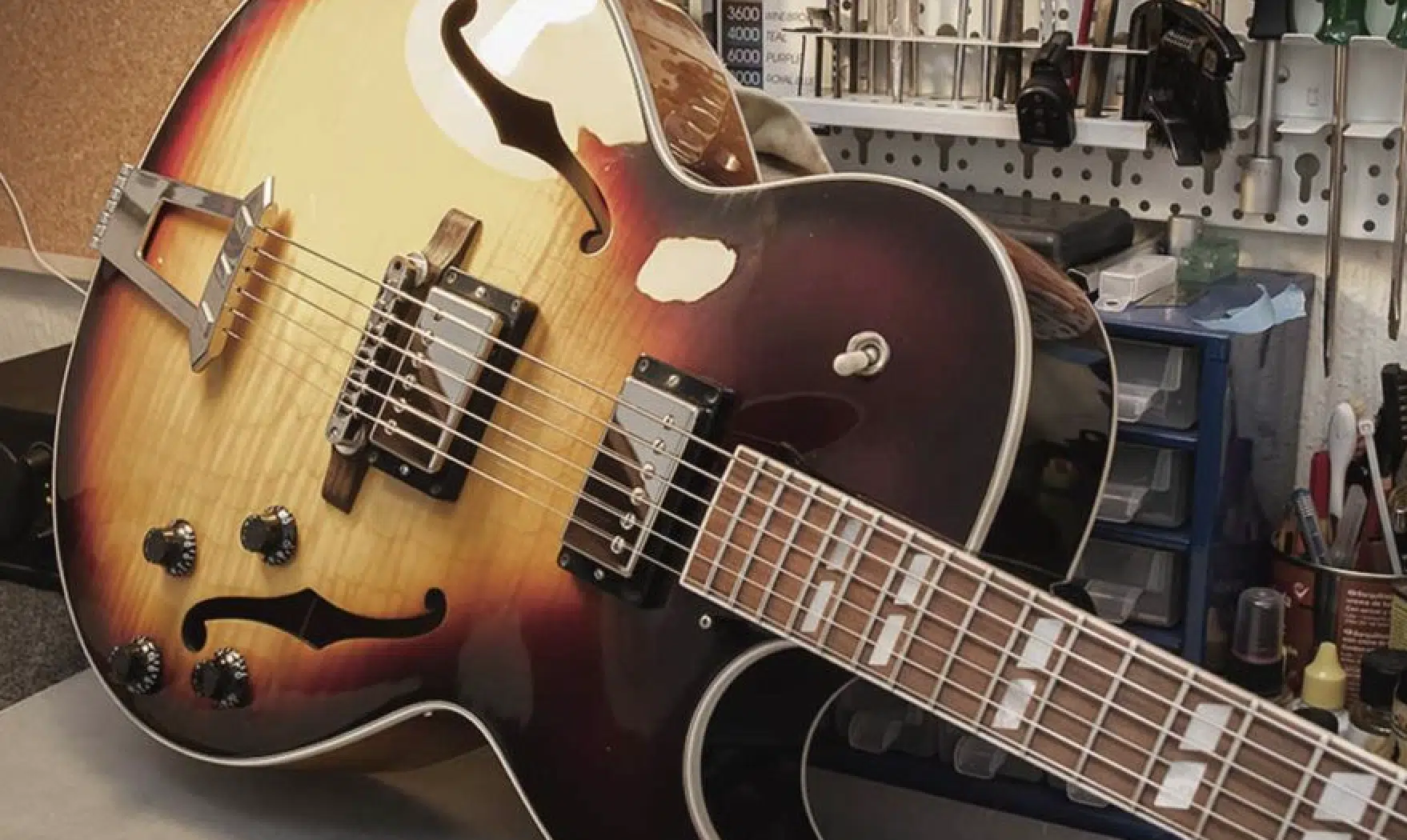
In digital music production, jazz guitar and its chord voicings play a crucial role.
The guitar’s rich tonal palette can add a warm, organic quality to digital tracks, bringing a classic jazz feel to modern productions.
The art of chord voicings on the guitar involves selecting specific notes from chords to create different textures and moods.
This technique is essential in jazz, where the expression and variation of chords are fundamental.
Understanding and utilizing jazz guitar voicings can greatly enhance the harmonic depth of your track and help introduce a desirable element.
It allows producers to experiment with different sonorities and bring a nuanced jazz flavor to their music.
-
Implementing Jazz Chords in Modern Tracks

Incorporating jazz chords into contemporary music can add a layer of sophistication and complexity.
It bridges the gap between traditional jazz and modern sounds 一 creating something nostalgic and forward-looking.
Producers often use jazz chords to add unexpected twists in their chord progressions, creating a sound that stands out.
This approach can be seen in various genres, from hip-hop to electronic music, where jazz elements are blended with contemporary styles.
-
The Role of Jazz Guitarists in Shaping Chord Progressions
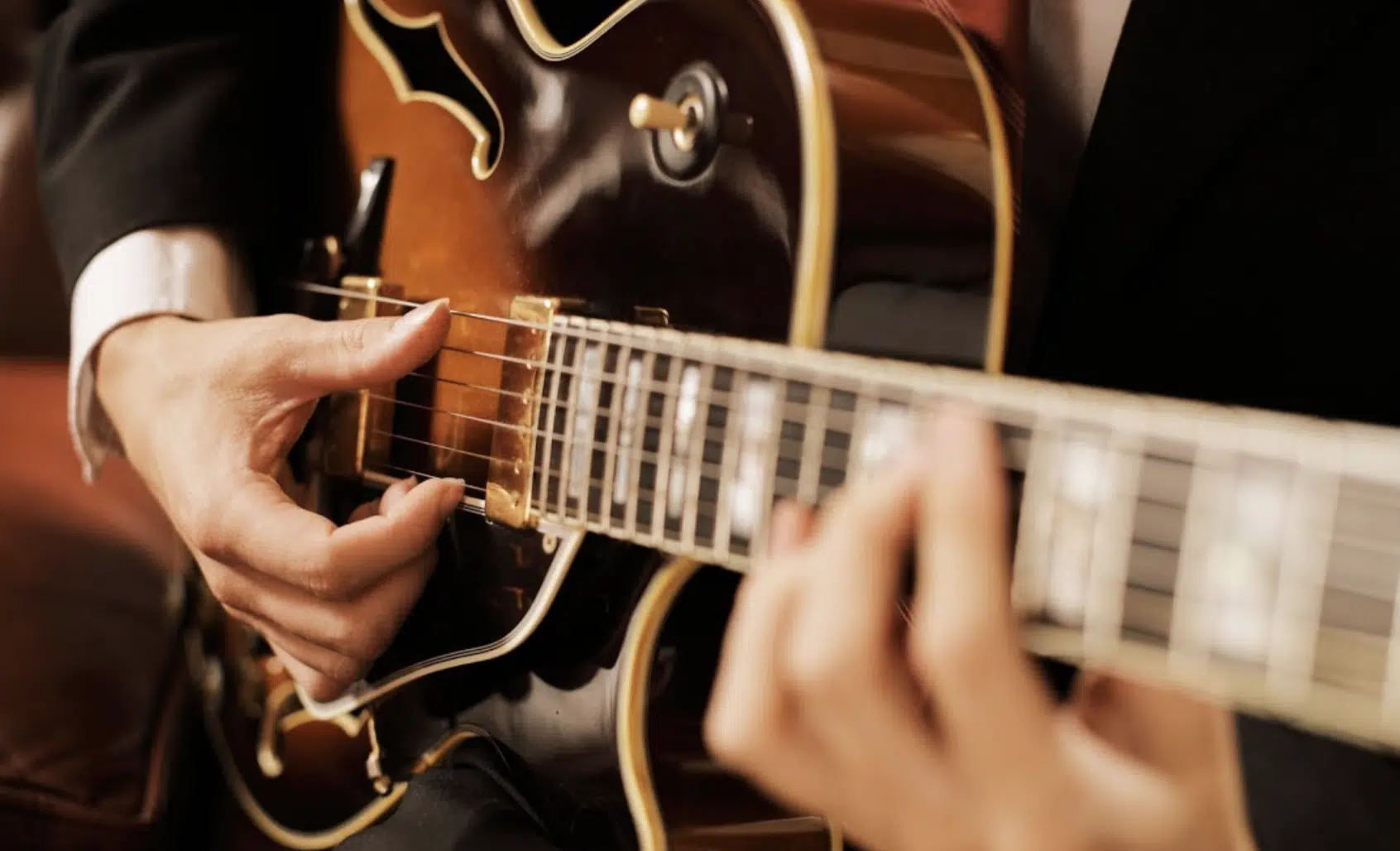
Jazz guitarists have historically played a significant role in shaping important jazz chord progressions and making them what they are today.
They influence the way jazz chord progressions are utilized by incorporating:
- Classic harmony
- Chord voicings
- Rhythmic patterns
Through their innovative techniques and stylistic choices, jazz guitarists continue to inspire and influence modern music producers.
A jazz guitarist demonstrates jazz chords’ timeless nature and endless potential in music creation.
So, by referencing how a jazz guitarist approaches the chords played is invaluable when trying to master jazz chord progressions.
Advanced Techniques in Jazz Chord Progressions
Moving into advanced techniques, we’ll now focus on the more intricate aspects of jazz chord progressions. First is the art of utilizing diminished passing chords, a technique that adds depth and complexity to your harmonic repertoire.
-
Utilizing Diminished Passing Chords

Diminished passing chords are a sophisticated tool in jazz harmony.
They provide a smooth transition between chords 一 adding tension and intrigue to the jazz chord progression.
These jazz chords are especially effective in adding harmonic interest to standard progressions.
By using a diminished chord, it can:
- Act as a bridge
- Create a seamless flow from one chord to another
- Enhance the overall musical narrative
The use of diminished passing chords requires a deep understanding of harmonic function and voice leading.
Mastery of this technique can greatly enrich a your harmonic vocabulary.
-
Exploring Extended and Altered Chords
Extended and altered chords are hallmarks of advanced jazz harmony.
Extended Chords
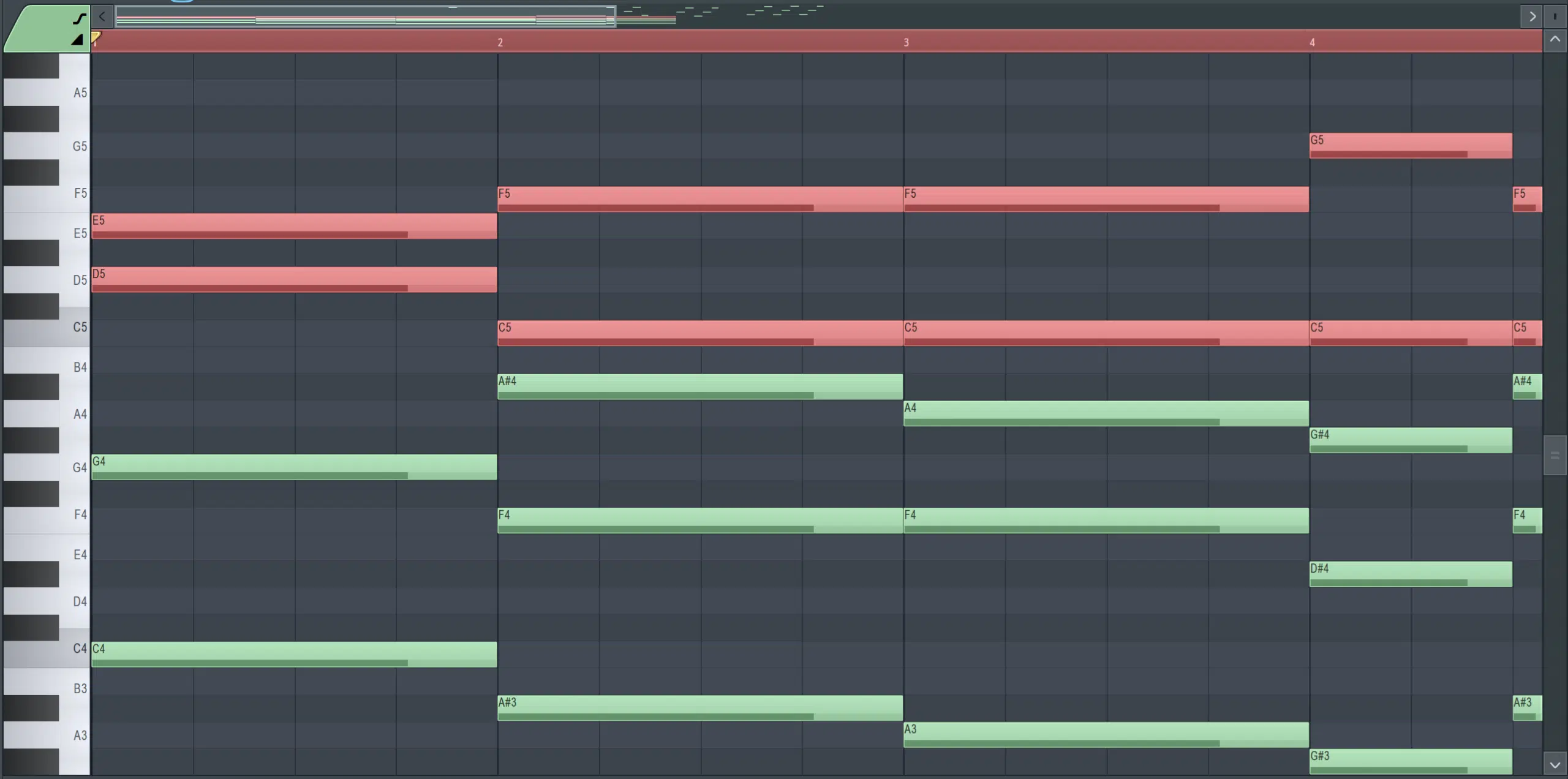
Extended chords expand beyond the basic triads and seventh chords 一 adding notes like ninths, elevenths, and thirteenths for a richer sound.
Altered chords

Altered chords, with their sharp or flat fifth and ninth tones, introduce dissonance and tension, creating a more dramatic harmonic landscape.
These chords are often used to heighten emotional impact in a progression.
Using these jazz chords effectively can open up new avenues for creative expression and professionalism.
They allow for a more nuanced and expressive approach to chord progressions, essential for advanced jazz composition and improvisation.
-
Creative Uses of Dominant Seventh Chords

Dominant seventh chords are pivotal in jazz, often used to create a sense of resolution or to drive a chord progression forward.
They have a strong pull to the tonic chord, making them ideal for creating movement in a jazz chord progression.
Jazz musicians often employ various alterations and extensions to the dominant seventh chord (such as a b9 or #11) to add color and complexity.
This makes the dominant seventh a versatile tool in jazz harmony.
The creative application of dominant seventh chords can add a dynamic element to your tracks.
Whether used in a traditional sense or with modern twists, these chords remain a fundamental aspect of important jazz chord progressions.
-
Learning from Jazz Standards

Jazz standards are a treasure trove of chord progressions and harmonic concepts.
They provide a historical context and a practical framework for understanding and applying jazz harmony.
Jazz standards also serve as a common language among musicians 一 facilitating collaboration and learning.
They are a source of inspiration but also a practical tool for honing one’s skills in:
- Jazz harmony
- Improvisation
- Experimentation
- Collaboration
- Continued education
Analyzing songs and playing jazz standards can offer insights into using various chord progressions and their emotional impacts.
This study is crucial for anyone looking to deepen their understanding of jazz music.
Tips and Tricks for Jazz Chord Progression Mastery
Let’s dive into practical tips and tricks to master jazz chord progressions, enhancing your musical toolkit. Whether you’re a jazz guitarist or digital producer, the following tips/tricks are invaluable. We begin by exploring the ii V I progressions 一 a fundamental concept, through iconic jazz tunes.
-
Mastering ii V I Progressions through Iconic Jazz Tunes
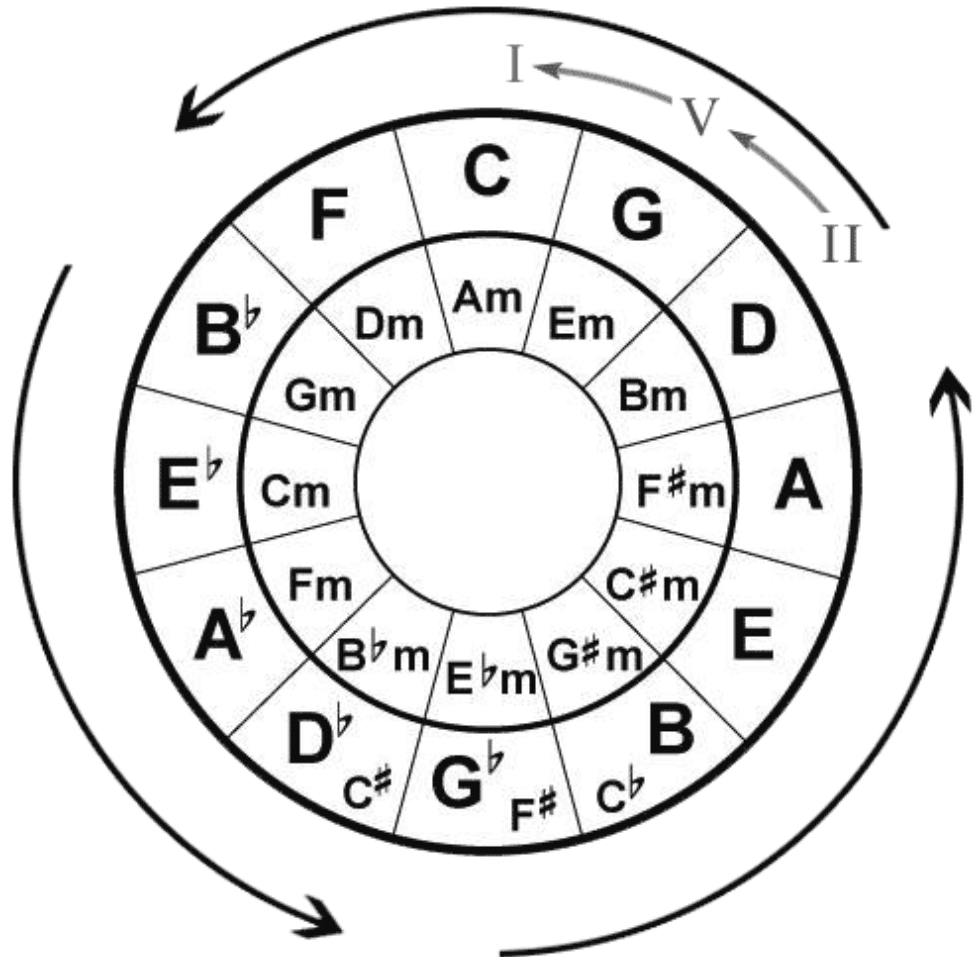
To deeply understand jazz chord progressions, especially the timeless ii V I, immersing yourself in iconic jazz tunes is key.
For instance, “Autumn Leaves” offers a masterclass in the major and minor ii V I progressions 一 illustrating how these chords create a sense of movement/resolution.
Analyzing “Stella by Starlight” provides insight into using chromatic bass lines within the ii V I framework.
This classic tune is a prime example of how chromaticism can add complexity and richness to the standard jazz chord progression.
-
Exploring Jazz Blues and Rhythm Changes for Versatility
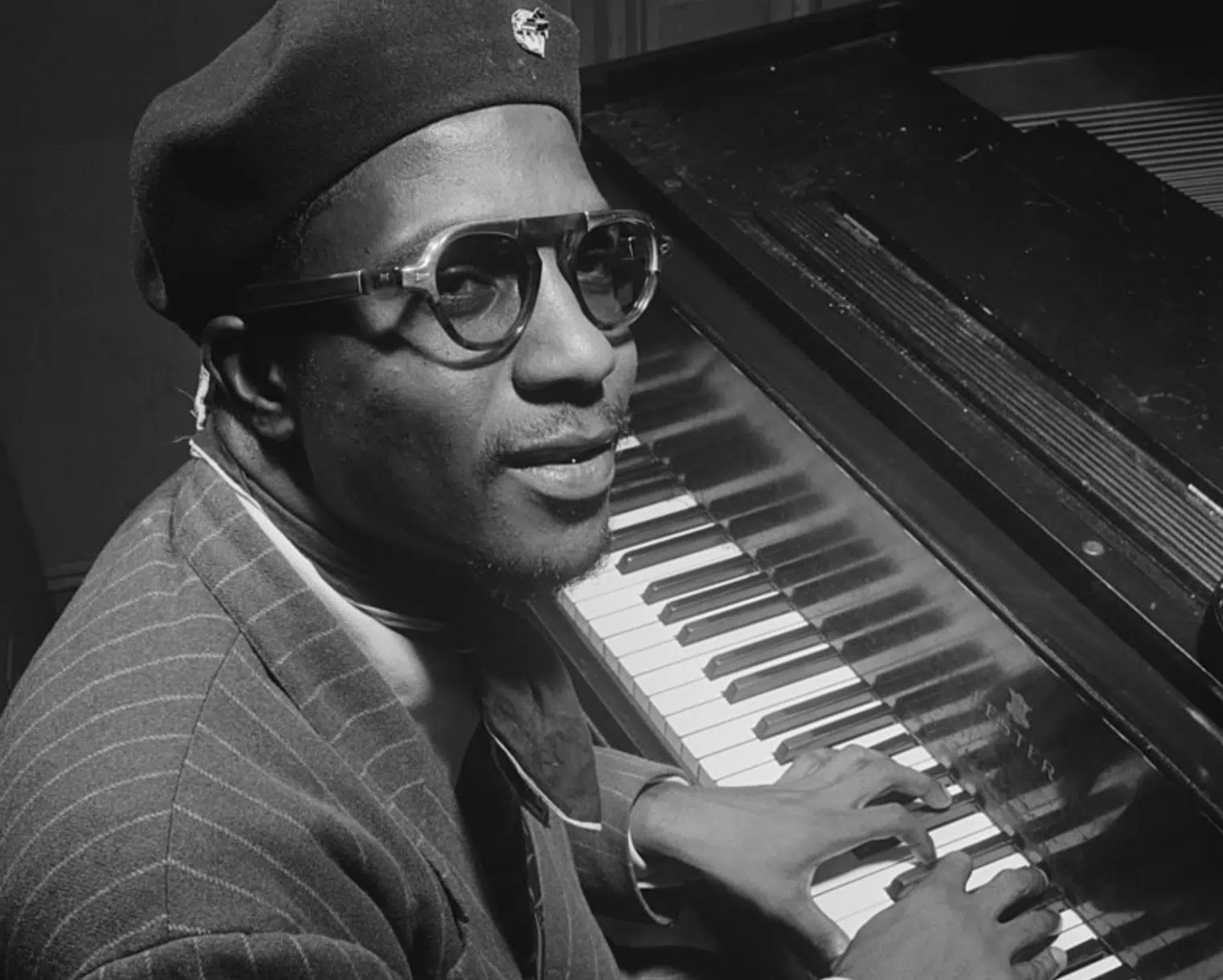
Delving into the jazz blues progression, as exemplified in “Blue Monk” by Thelonious Monk, can reveal the nuances of incorporating:
- Dominant chords
- Diminished chords
- Passing chords
All within a standard 12-bar format.
This study helps in understanding how jazz blues progressions diverge from traditional blues, adding harmonic sophistication.
Engaging with rhythm changes, a chord progression epitomized by tunes like “Oleo” by Sonny Rollins, is crucial for mastering faster-paced, chord-heavy jazz standards.
These changes, with their rapid ii V I sequences and rhythmically driven chord progressions, are essential for developing agility and versatility in jazz harmony.
-
Integrating Jazz Harmony into Modern Music Production

In digital music production, integrating jazz chords and progressions, such as the minor ii V i or diminished passing chords, can elevate the musical sophistication of tracks.
This ‘diminished passing chord’ approach, as heard in jazz songs like “So What” by Miles Davis, can introduce elements of jazz harmony into contemporary genres.
It blends the old with the new in a very desirable way.
Experimentation with extended chord voicings and altered dominant chords can add a layer of harmonic tension and complexity to electronic compositions.
This technique, which is central to jazz comping and improvisation, offers a vast palette for creative expression in modern music production.
So, make sure to experiment with a dominant chord or extended chord voicings for extra intrigue and appeal.
Jazz Chord Progressions: Final Thoughts
Delving into the world of jazz chord progressions opens up a universe of musical expression and creativity.
From the foundational i chord in jazz harmony to the intricate diminished passing chords, these progressions form the heartbeat of jazz music.
They offer endless possibilities for innovation and exploration.
Whether you are a seasoned jazz enthusiast or a digital music producer looking to infuse your tracks with a touch of jazz sophistication, mastering these progressions is a journey worth taking.
To further enhance your exploration and practice, don’t miss out on the free Essential Famous MIDI Chord Progressions pack.
This pack is an invaluable resource, featuring 24 unique MIDI chord progressions extracted from songs by renowned professional hit-makers.
These progressions are not only a window into the techniques used in hit songs but also a practical tool to apply what you’ve learned about jazz chord progressions in real-world scenarios.
Experiment with them in your digital compositions, and you’ll find a new depth and flair in your music.
Remember, the journey through jazz chord progressions is not just about understanding theory 一 it’s about bringing soul, emotion, and complexity to your music.
With these tools and knowledge, you’re well on your way to crafting tracks that resonate with the rich legacy of jazz and the innovative spirit of modern music production.
Until next time…







Leave a Reply
You must belogged in to post a comment.